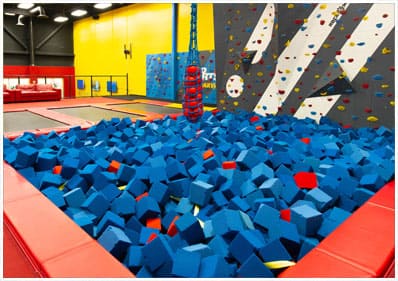
6 Trampoline Facts that’ll Knock Your Jump Socks Off
From the circus to the profundities of external space, the trampoline tends to pop up in a few completely startling and goodness so exceptionally cool places. Nowadays, we’re hitting you with 11 shocking trampoline realities that’ll blow you out of your bounce socks (which is completely secure on a trampoline, expecting
you purged your pockets per our security rules! You don’t need to arrive on a write the off-base way).
Trampoline parks like Elevation are as it were the foremost later of numerous energizing chapters in trampoline history. From the fun to the captivating, to the completely crazy, these 11 truths take a few beautiful astounding turns.
Inuit Trampoline
Well, not very a trampoline. There was a adaptation of trampolining concocted by the Inuits where they would extend a walrus skin in a circle, with one individual within the center, and after that catapult them into the discuss by fixing the skin rapidly, at that point
catching the individual, and so on.
The Innovator and His Kangaroo
American trapeze artist George Nissan concocted the trampoline in 1936, motivated by the net that would capture trapeze craftsmen within the circus (the nets would actually dispatch gymnastic performers back into the discuss for the get off. He made the trampoline in his carport, and begun to showcase trampolines to begin with for preparing, and in the long run, too for fun.
He broadly utilized a kangaroo on his trampoline as a showcasing strategy, timing his bounced with kangaroos at the same time on his development. The Kangaroo’s title was Victoria.
Trampoline Fabric isn't Elastic!
Wha?! You studied that accurately. As it were the springs pulling the trampoline bed instructed are versatile. The genuine bed itself is made from groups of woven nylon.
Space pioneer Training
NASA employments the trampoline in a few ways to get ready space travelers for spaceflight and offer assistance them recoup. In expansion to the regular wellbeing benefits, trampolining is culminate prep for all of the bouncing around that happens moment-to-moment amid space travel, since it trains you to control your center of gravity. Then, when space explorers return from space, trampolines are a awesome way to restore them by making a difference them revamp their bone mass and reinforce their joints in a low-impact routine.
Trampoline within the Olympics
Since the year 2000, trampolining has authoritatively gotten to be a bonafide Olympic occasion for men and ladies! Olympic trampoline jumpers can reach confounding statures up to 33 feet (8 meters) within the discuss whereas performing traps and turns that would make your spin… numerous numerous times in a row. Athletes must perform a foreordained schedule of a few traps one after the other, as well as an discretionary schedule of 10 recognized aptitudes. Competitors must start and conclusion schedules on their feet and competitors are judged for their stature as well as for their tricks. As a fun cherry on best, innovator George Nissan gone to the exceptionally to begin with Olympic trampoline occasion. After the occasion was over, George, moved by what he had seen, told correspondents “It is something I imagined, like individuals winning a million dollars.”
The Mineshaft Full of Trampolines
Whereas here at Elevation, we know our trampoline parks, so we got to tip our cap to this Crazy wonder. An ancient mining town in Ridges called Blaenau Ffestiniog changed over it’s enormous purge mining caverns into a jaw-dropping underground trampoline park. We’re talking fundamentally a entirety underground cave framework of trampolines, winding through burrows as well as up and downhill! What?! Up to 1500 individuals bounce underneath ground in this frantic Welsh marvel each week.
Aerosports Has the Biggest Park in Ontario
Aerosports Trampoline Park is the biggest park in Ontario Canada! That’s a lot of jumping space.
